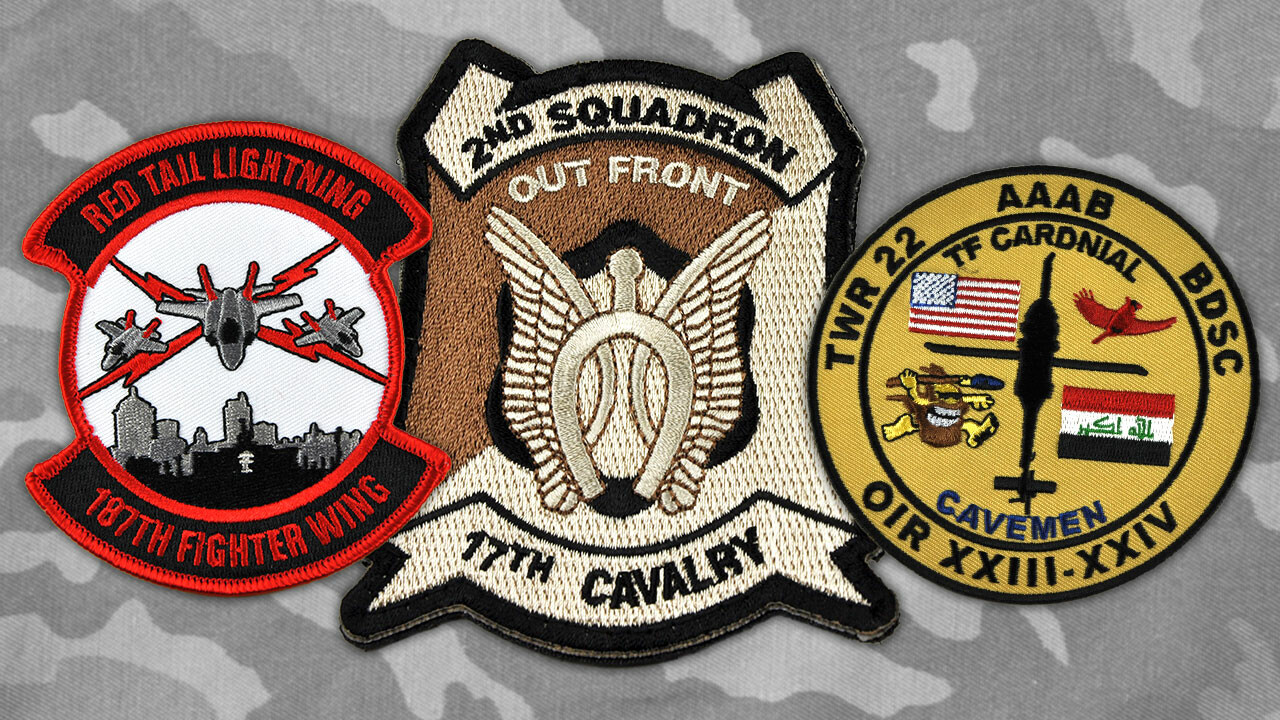
The History of Military Patches
Military patches have a long, distinguished history. Find out more about how custom patches came to be part of standard military uniforms.
Military patches are a universal part of uniforms, both in the United States and around the world. When did embroidered patches come into use, and what makes them so important as a part of the standard military uniform?
Patches Are Relatively New to the U.S. Military
The history of military patches in the United States is relatively brief. Some soldiers in the Civil War wore them for identification. These were typically made by mothers, wives or girlfriends on the home front. The grim reality was, they were often the sole means of identification when a soldier was killed or wounded.
At the time, virtually all embroidery was done by hand, just as it had been for thousands of years. Each patch was at least a little bit different, a mark of who made them. It would have been difficult or impossible to standardize them. But not long after the end of that war, changes already wrought by the Industrial Revolution brought big changes to embroidery and custom patches.
Modern Technology Makes More Patches Possible
The invention of the sewing machine, and later the powered embroidery machine, greatly decreased the cost and increased the speed of embroidery production. That made it possible for custom embroidered patches to be produced rapidly and consistently. By the early 20th century, machine embroidery was well-established.
After U.S. troops entered World War I in 1917, the Army’s 81st Infantry Division designed what’s come to be known as the first shoulder sleeve insignia, or tactical patch.
Before they deployed to Europe, the troops of the 81st Infantry trained at Fort Jackson, S.C., near a body of water known as Wildcat Creek. As a result, their patch design featured the silhouette of a wildcat on an olive drab background.
Within 20 years, every U.S. Army group, squad, corps, and division had its own unique shoulder sleeve insignia. The 82nd Airborne insignia features a mirror-image pair of “A”s for All-American. The 1st Infantry Division shows the famous “Big Red One,” and so on for all the others. Insignia that included unit patches soon became a standard part of the uniform.
Tactical Patches
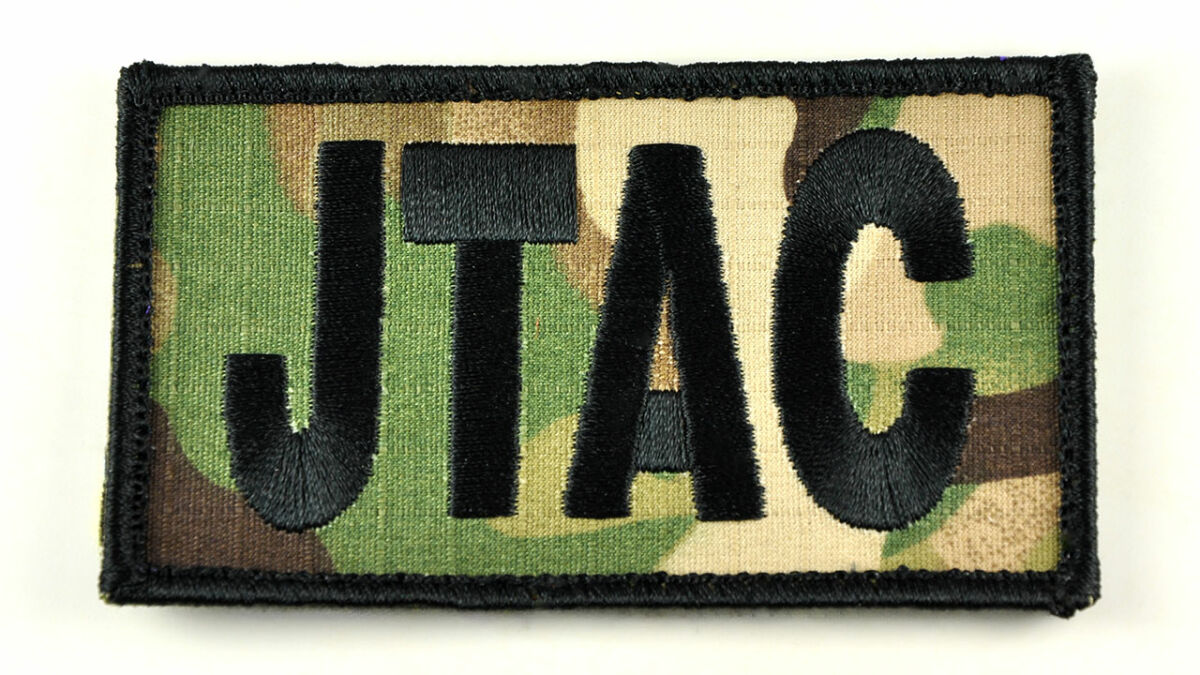
Tactical patches serve a purpose. They can identify rank, names or important information, such as blood type, about individual team members. They can be covert, visible only under specific lighting conditions to instantly detect whether a wearer is friend or foe.
Non-covert patches, on the other hand, are intended to be easily visible, such as identifying fellow police officers in low-light conditions by the patches on their jackets or vests.
Disney Military Patches
By the time American troops joined World War II, even the fabled Disney illustrators became patch designers. The studio crafted insignia for many miliary units, featuring almost all of Disney’s famous characters. The patches served as unit identification and functioned as morale patches to keep spirits up during the war. Unfortunately, copyright restrictions prevent us from being able to show any of the Disney designs here.
Flag Patches

It would seem that American flag patches have always been a required part of U.S. military patches. That’s not the case. They’ve only been mandatory insignia since 2005.
Army regulations (and those for the other services as well) specify that all soldiers must wear an embroidered flag on their uniform. The flag must be the full-color red, white and blue unless they are deployed in the field
In the field, the bright colors of the standard flag stand out. That increases the chances of military members being seen by the enemy. Therefore, the flag patches worn in the field are embroidered in “subdued” colors. Those colors show the flag in shades of black, light gray, dark gray, tan or brown. That makes the flag harder for opposing forces to spot.
“Why Is That Flag Backward?”
You’ve undoubtedly seen military personnel wear a U.S. flag patch on their right shoulder. It’s an official part of the uniform. It appears to be “backward” from the usual position, with the stars on the right side, rather than the left where we normally see it. Yet if they wear a flag on their left shoulder, it’s in the traditional position. Why is the flag on the right sleeve reversed?
There’s a very good reason for that. The official Army Regulations (AR 670-1, for those who are keeping track) requires that the star field of the flag face forward. The appearance of the flag is to be as if it’s being carried forward on a battlefield.
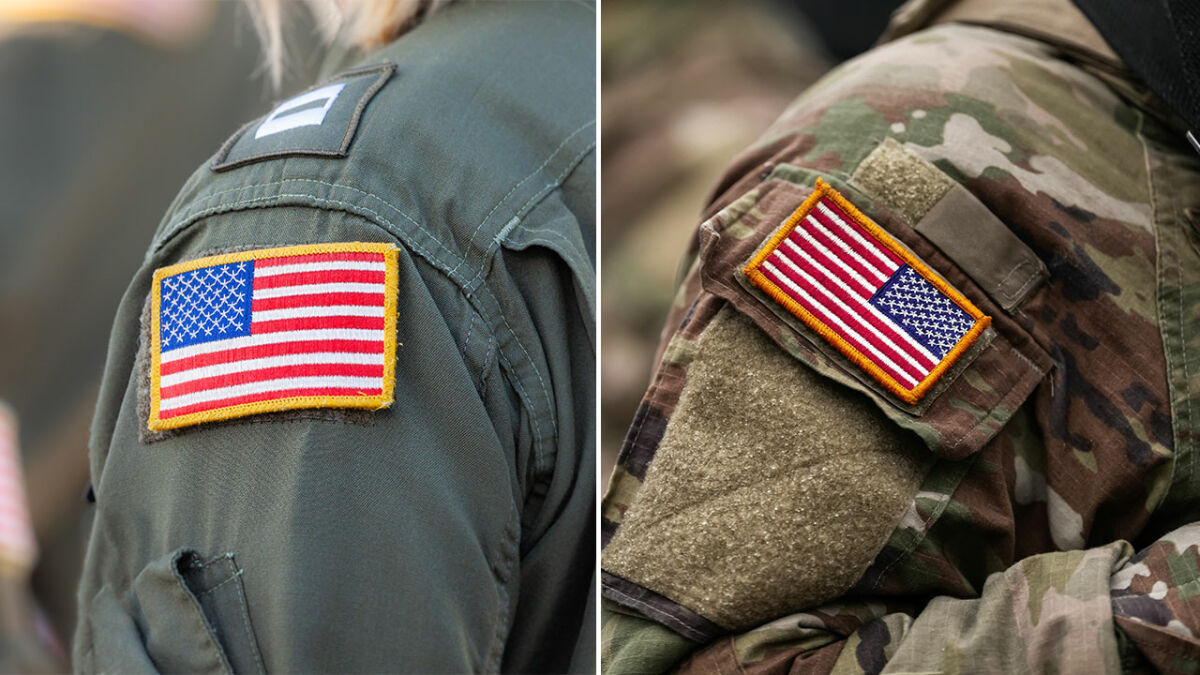
The rationale is that when a flag is being carried into battle by cavalry or infantry, the stars are closest to the flagpole. The forward momentum causes the stripes to stream back. If the flag is worn on the left shoulder as in the left photo above, it’s moving forward when viewed from the traditional position. If you’re looking at the flag worn on the right shoulder as in the right photo, the flag is still moving forward as the soldier marches forward.
Morale Patches
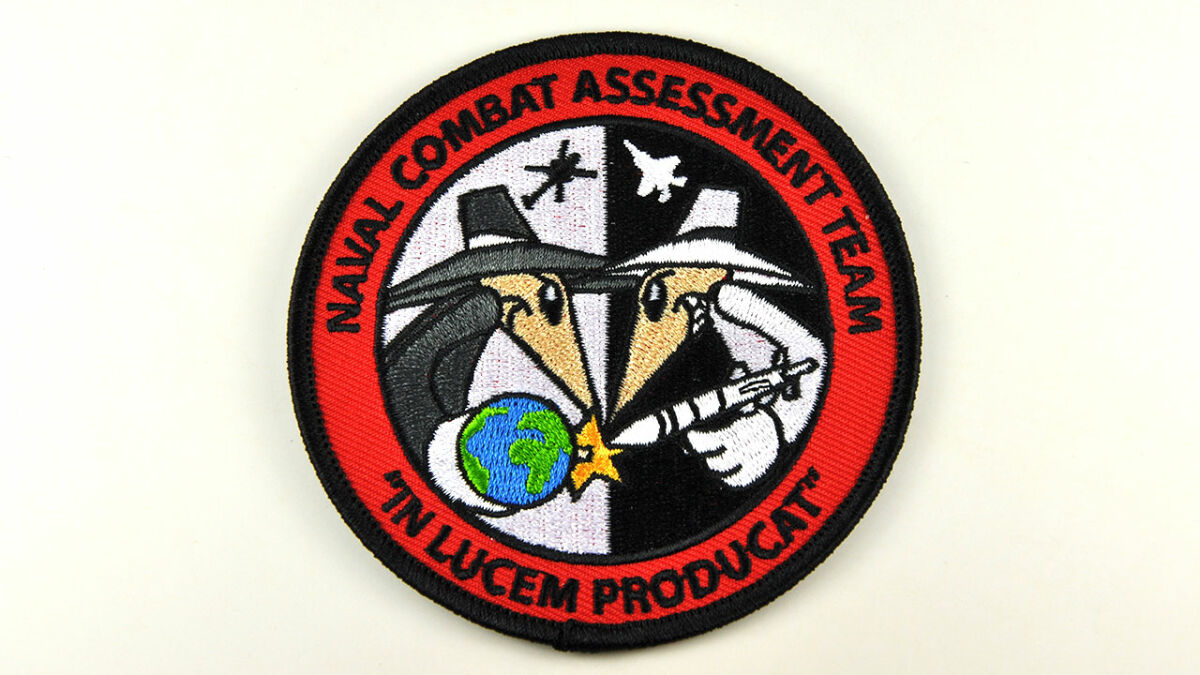
Morale patches are also a popular accessory for military uniforms, although an unauthorized, unofficial one. Morale patches express the wearer’s feelings about the military, their political views, or sometimes even a sarcastic or snarky joke. They’re made to the same quality standard as official patches, but are not issued by the military. Instead, the wearers buy (or make) their own.
Morale patches can be something simple – a word or phrase – or something more ornate with custom designs to match a unit’s unofficial symbol or motto. It’s entirely up to those ordering the patches. Any reputable patch supplier can provide top quality custom morale patches right alongside more traditional shoulder insignia and other patches.
Morale patches are not an official part of the uniform, and can be blunt in their statements. They often say something that military leaders might not agree with or appreciate. For that reason, they’re most often attached to uniforms with Velcro® hook-and-loop fasteners. The Velcro® fastener makes it easy to take the patch off quickly if a superior is likely not to be amused by it.
Velcro® Makes Patches Even Better
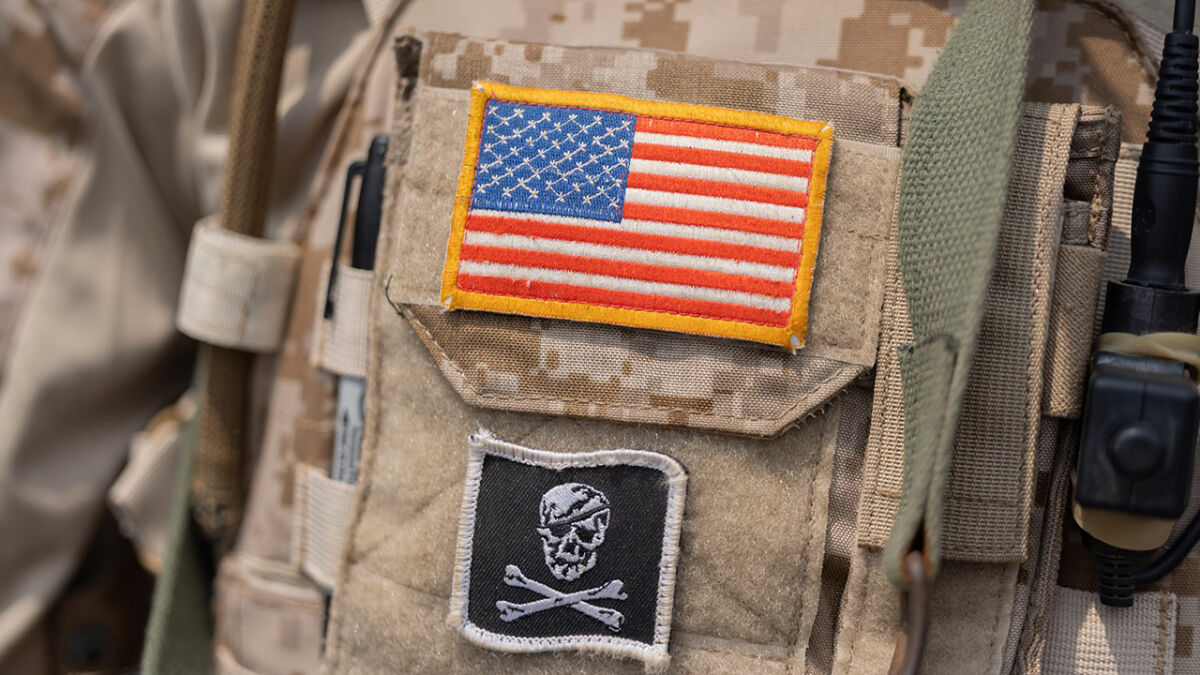
Of course, Velcro isn’t just for morale patches. The flag patches mentioned above, for example, attach to uniforms with Velcro. That allows them to be removed quickly as needed. In a field deployment, the full-color flag can easily be replaced in seconds with a muted color “subdued” style that doesn’t stand out against camouflage.
Velcro patches also can be transferred easily between garments. That’s convenient when one garment needs laundering, but you’re wearing a second one as part of the uniform.
Patches Offer Versatility
Whether you’re wearing name patches, flag patches, morale patches or other insignia, custom patches offer the ability to declare your name, unit affiliation and other information to fellow enlisted personnel and officers alike.
Today, virtually every U.S. military unit has its own patches, as do many units of other nations as well. As a means to identify rank and unit means they serve a vital purpose in both peace and war.
Military patches have been an indispensable part of military uniforms for decades. They serve multiple purpose and help keep servicemen and -women safe and informed.
When it comes to custom military patches, Patches4Less.com is your best source. We offer outstanding quality, low prices and the best customer service in the business. Call or email us to find out more about how we can craft great military patches for you.